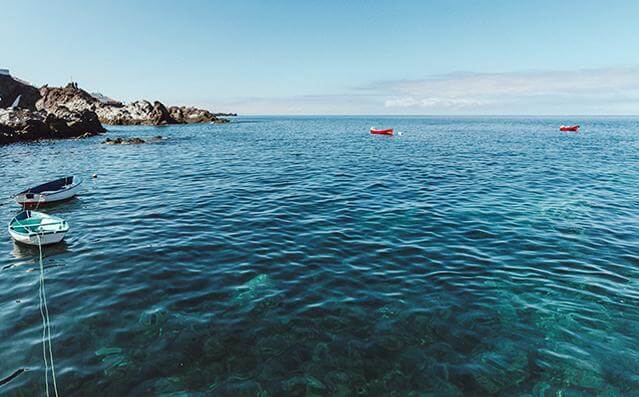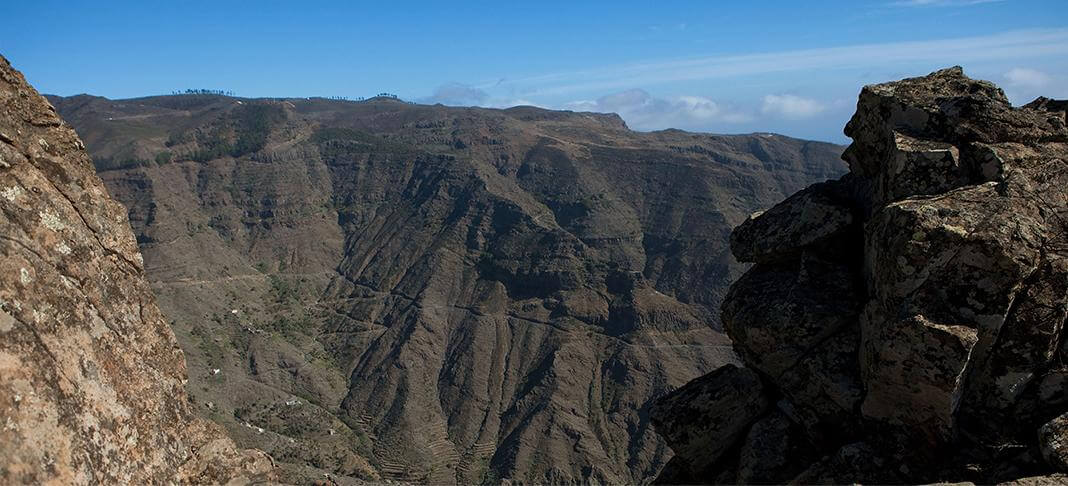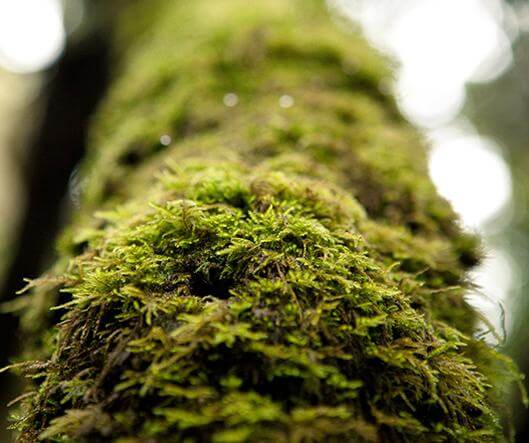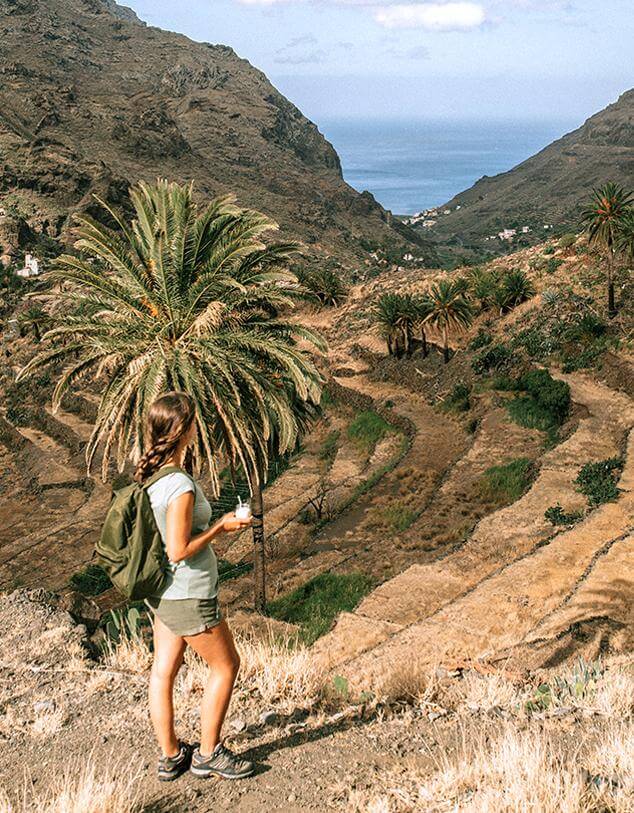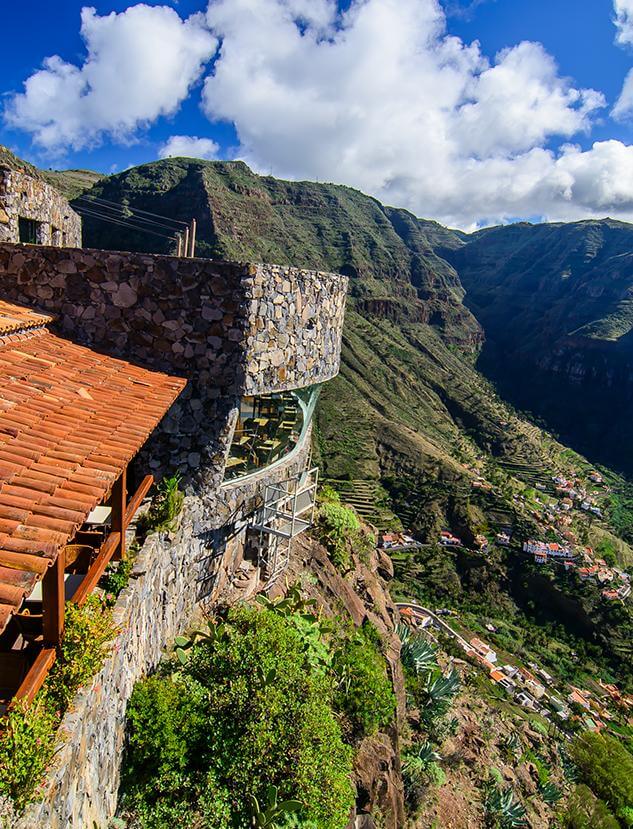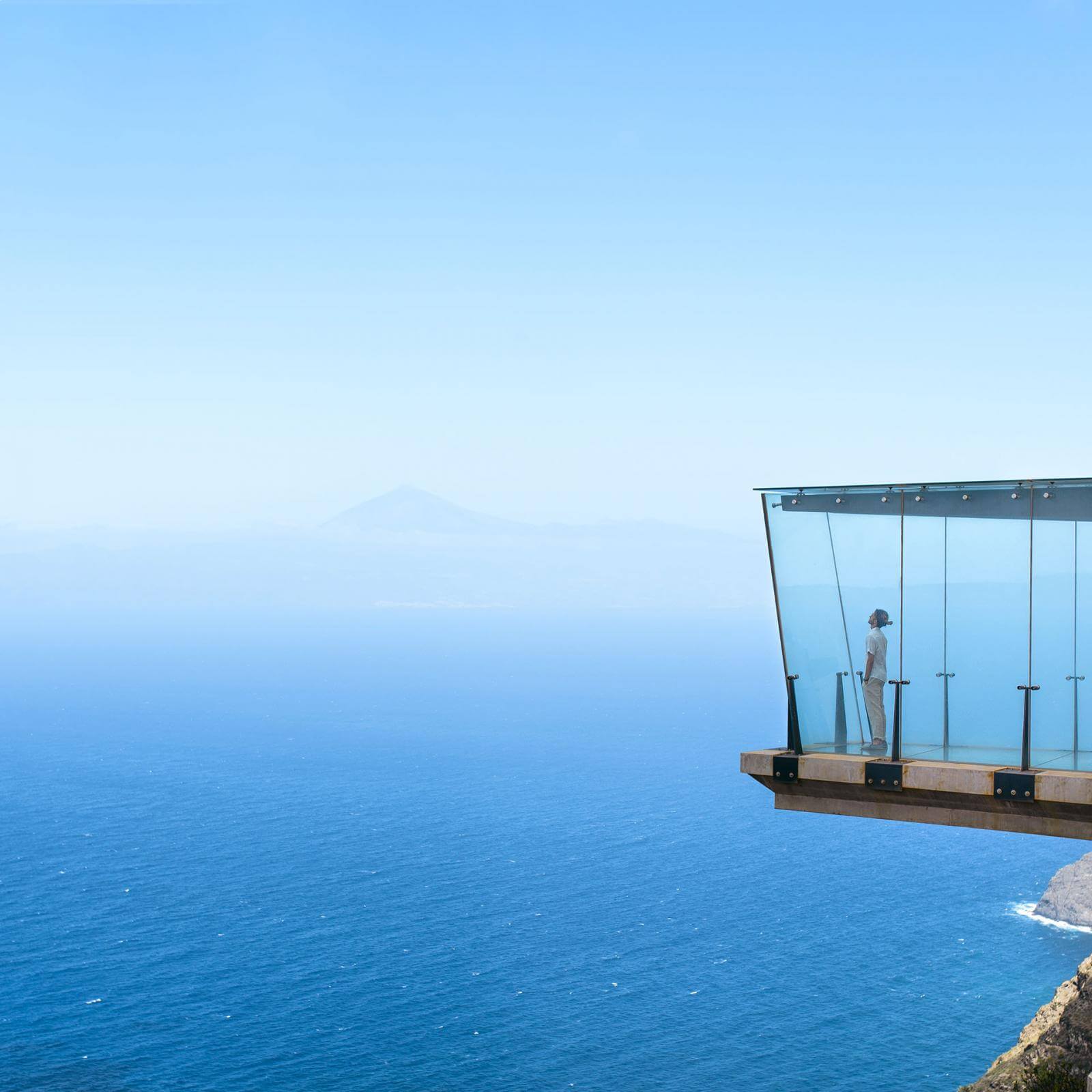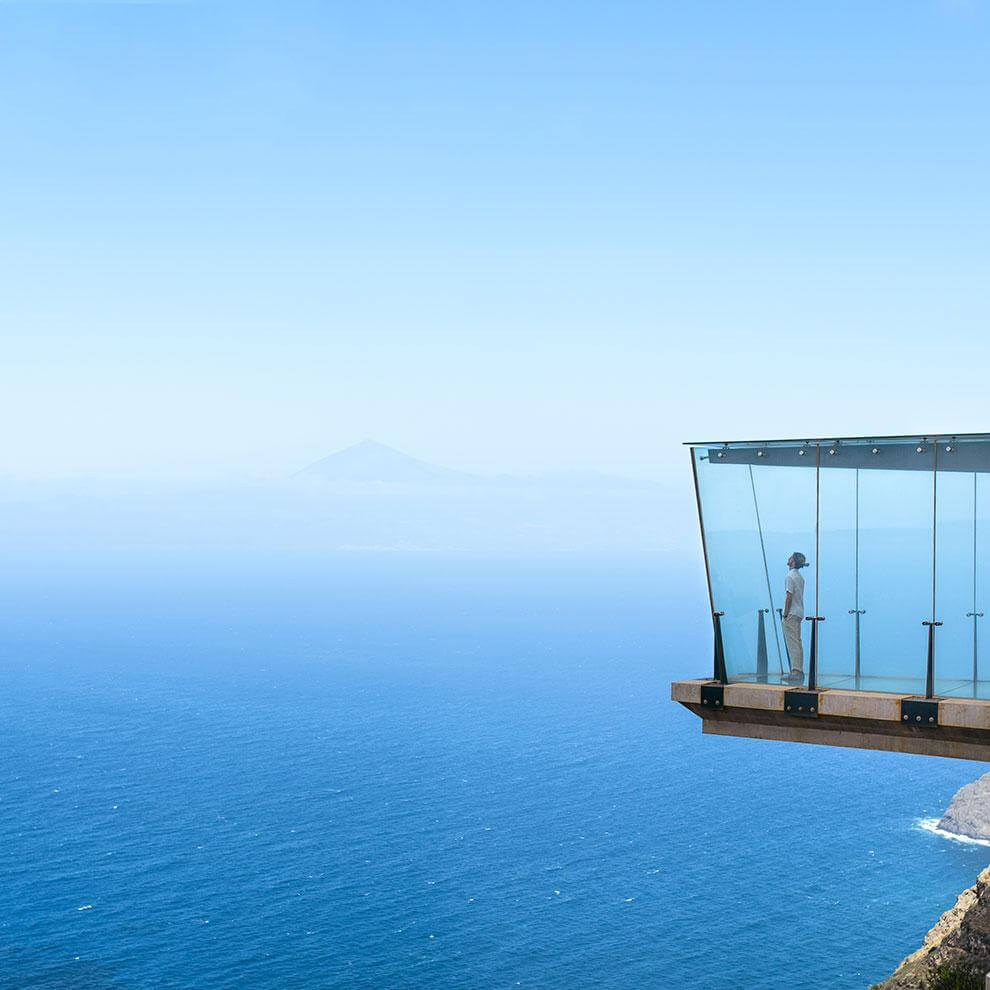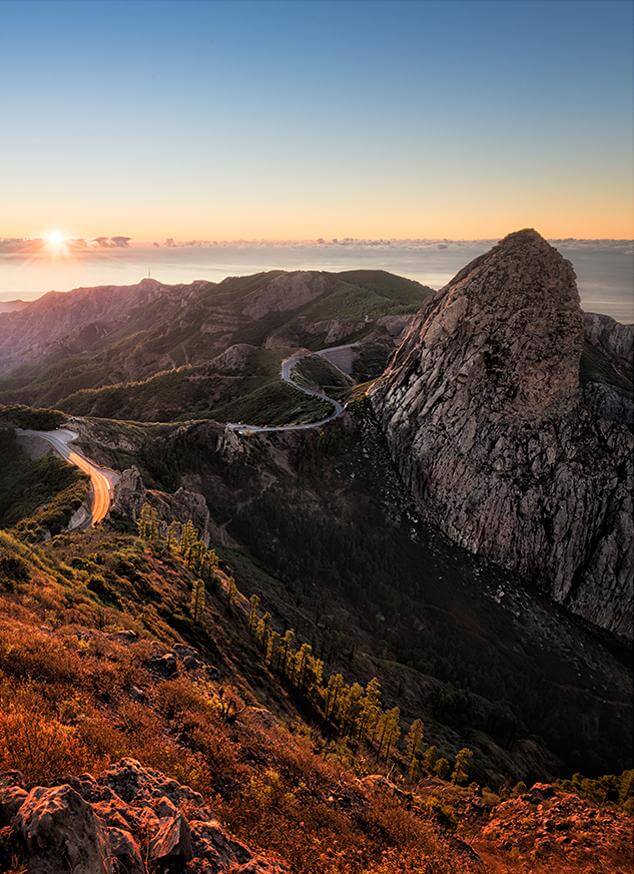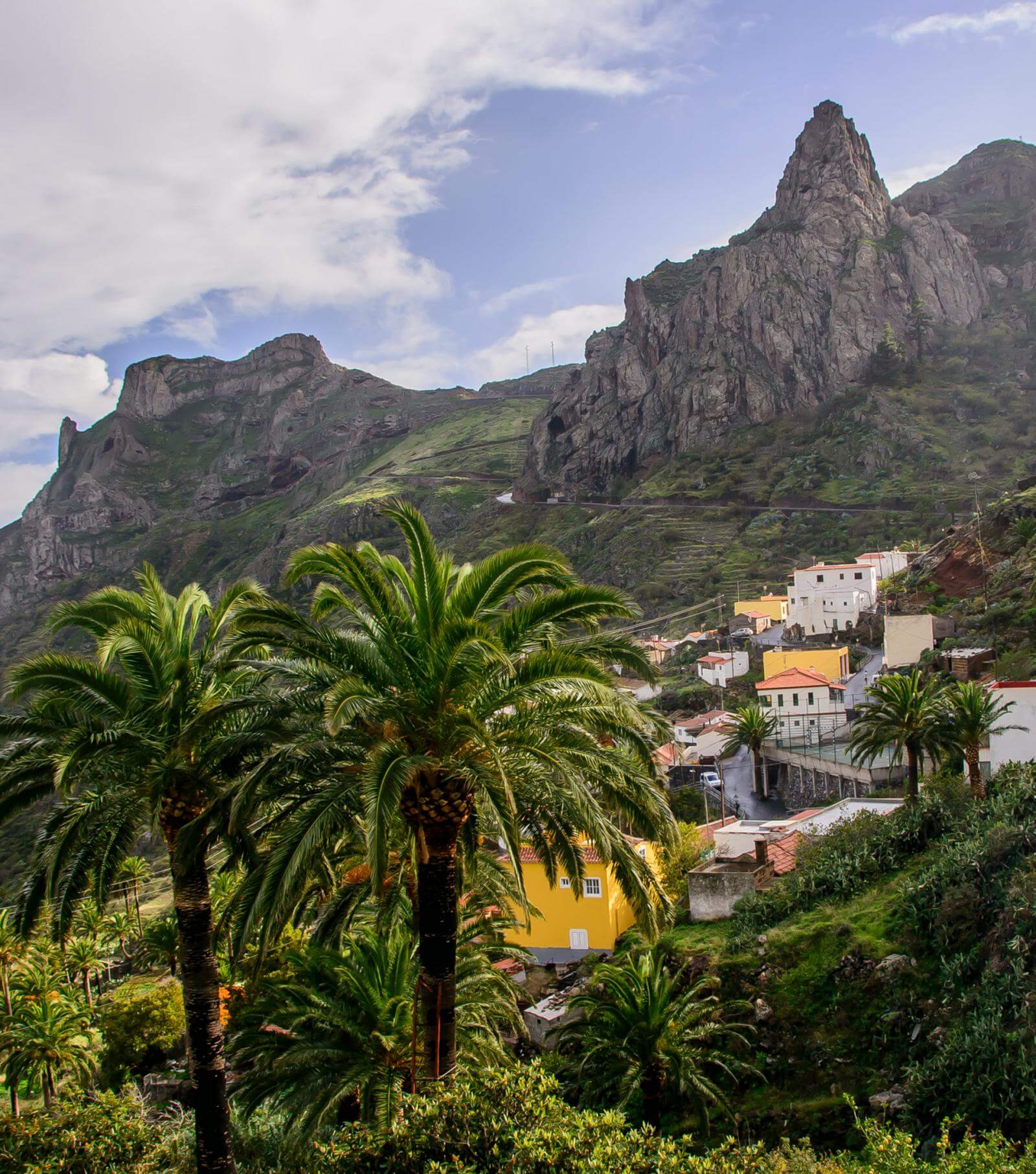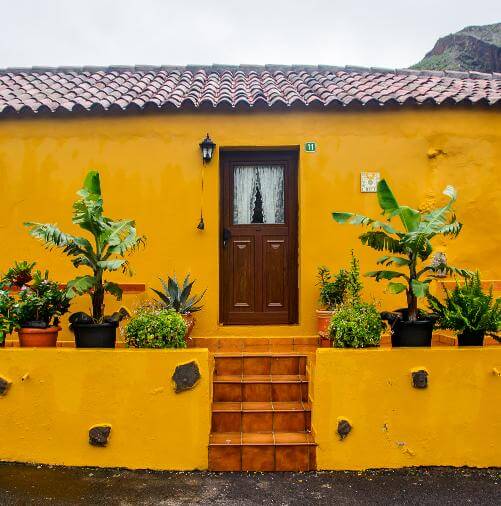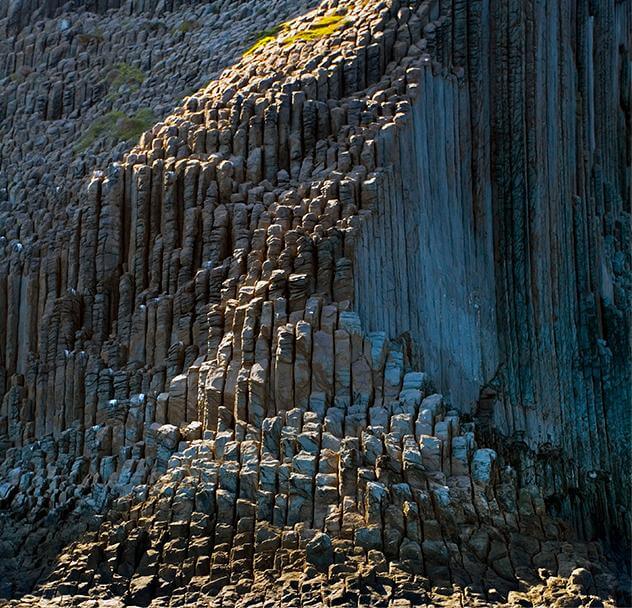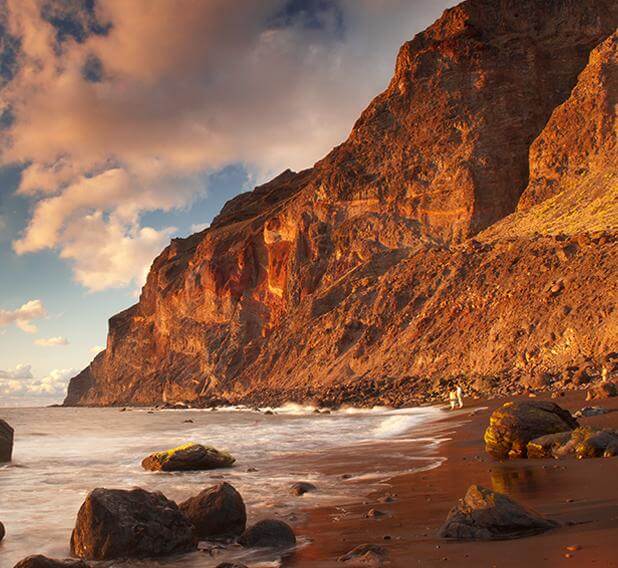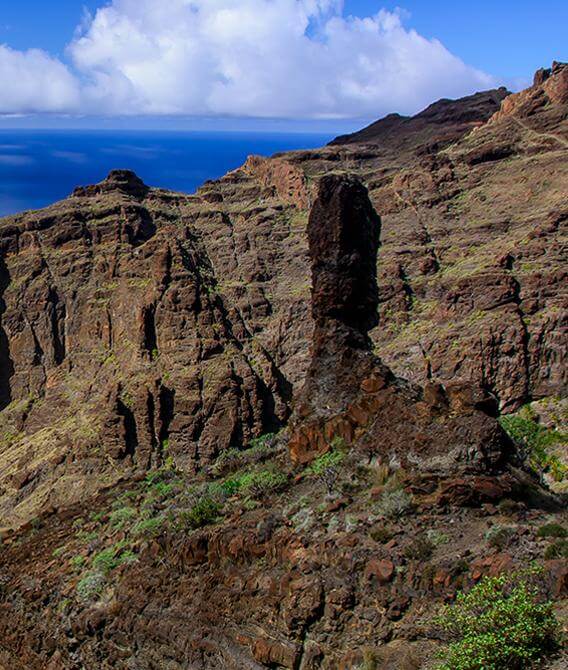Lush laurisilva, deep ravines and abrupt cliffs, impressive rocks, valleys colonised by leafy palm groves, wild little beaches… Those are the landscapes of La Gomera, an orography so intricate that, at first sight, we immediately understand why ‘silbo’, an ancient, whistling form of communication, appeared and survived on this island.
The charming hamlets, blended in amongst terraces of crops perfectly tended on the sides of the ravines, create a most inspiring whole. A vision that reminds us that harmony between human activities and nature is not only possible, it is necessary. For that reason, and for many more, La Gomera is a biosphere reserve.
A perfect place for connecting with simple life. For exploring kilometres of trails in almost virgin, natural environments without worrying about the time of year, as any day is right for doing open-air activities in the best climate in the world, the climate in the Canary Islands.
On his way to discover the New World, Christopher Columbus made La Gomera his last port of call before setting sail towards the unknown, leaving his mark on this little Atlantic island also known in Spanish as the ‘Isla Colombina’ (Columbus’s island).
How could you not feel unique on this beautiful, quiet, green island, discovering every part of it and its curious traditions that have stood the test of time?
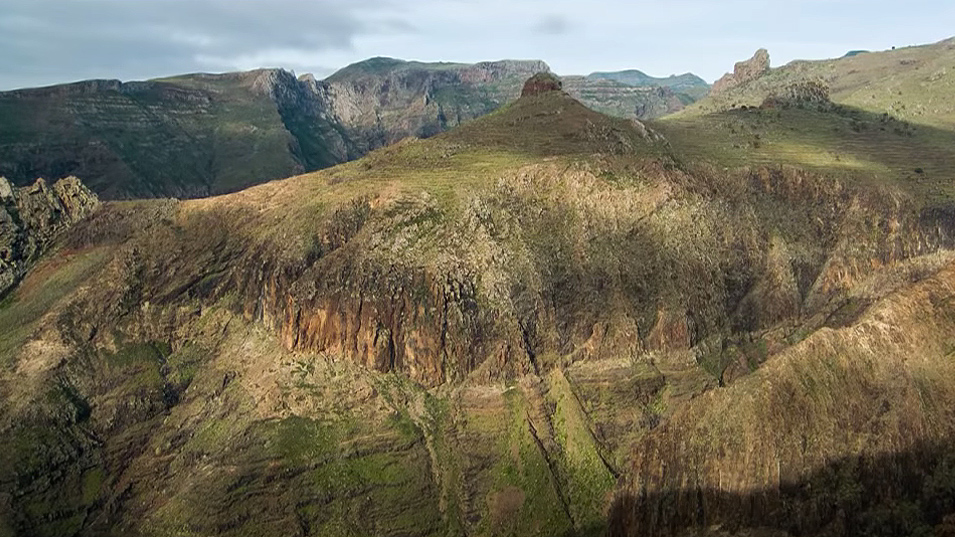

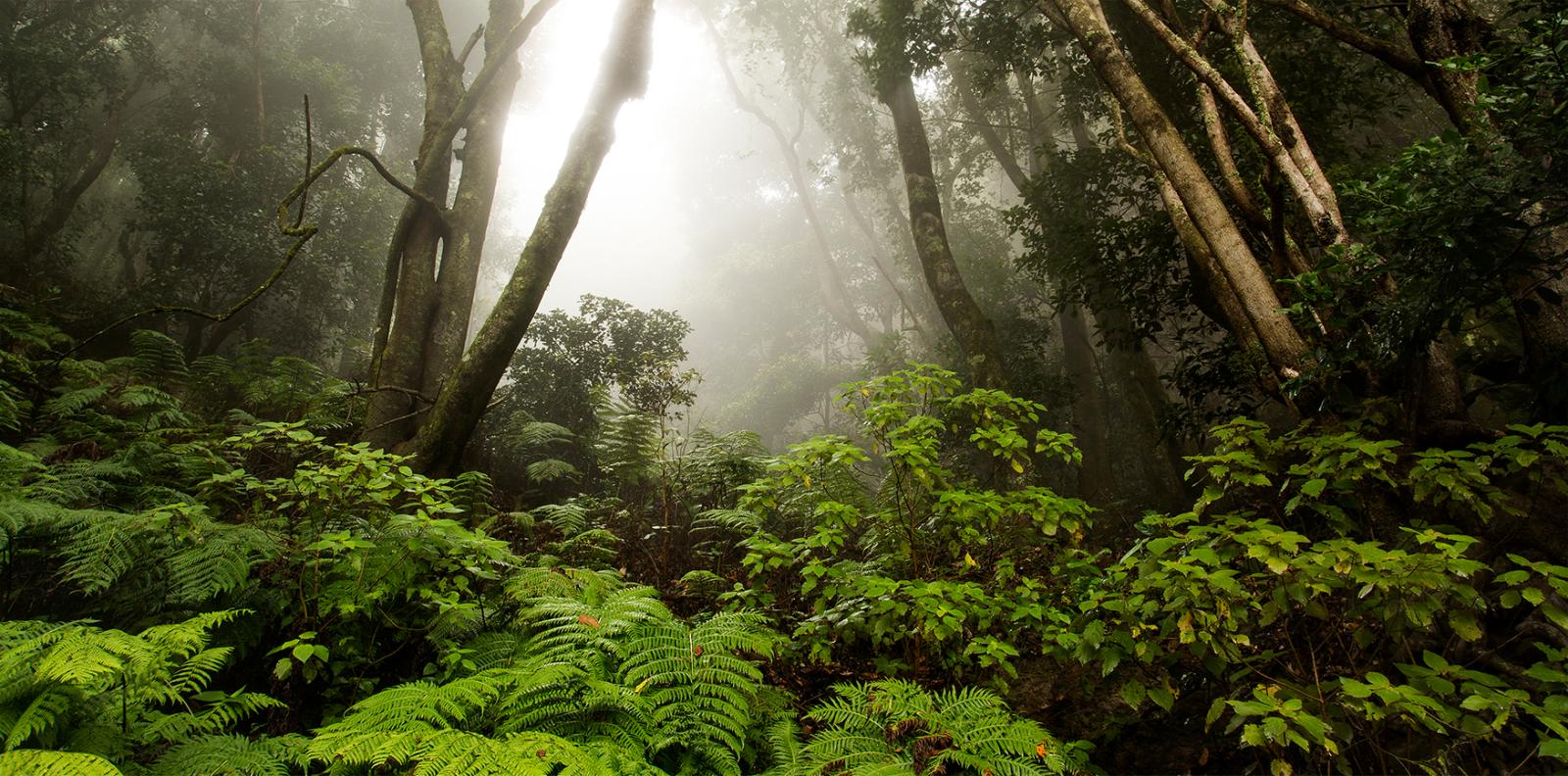
Explore endless trails
More than 600 kilometres of trails invite us to discover the island on foot, the best way to find unforgettable spots such as the Riachuelo de El Cedro, in Garajonay National Park, where enormous trees and ferns in a lush, humid forest, of a kind now disappeared from most of the planet, strike us speechless.
But La Gomera is not just Garajonay. The ways around the island also explore landscapes that are radically different to the lush forest. As is the case of the deep ravines that open out into the sea, whose sides have been carefully worked by Gomera farmers, creating a beautiful landscape of perfectly laid out terraces. A rich variety of scenery that also includes leafy palm groves that shroud many areas of the island’s geography in green.
Enjoying nature through this extensive network of trails, most of which are old roads that have remained throughout time, also gives us the opportunity to slowly stroll around charming hamlets and discover the island’s traditional architecture and rural atmosphere.
From viewpoint to viewpoint
Its craggy orography means that many places on La Gomera become magnificent vantage points from which to see spectacular views. Aware of this, the fabulous Lanzarote artist César Manrique couldn’t help epitomising his enormous talent precisely in one of the island’s viewpoints: Palmarejo. From here, one of the best specimens of Gomera rural scenery stretches out before us: the Valle Gran Rey, a beautiful image comprising terraces that look like they are climbing up the slopes, blending with hamlets and splendid clusters of Canary Island pines. Perfect harmony between nature and human activities, with the intense blue of the ocean always present.
Can you imagine feeling like you are ‘floating’ in thin air? At the Abrante viewpoint, you can experience exactly that, thanks to the glass floor that stretches out over the precipice like a cantilever, where you will feel like you are flying over Agulo, a picturesque little town in the north of La Gomera, with the impressive Teide on the neighbouring island of Tenerife as a backdrop.
You can’t miss the show from the Morro de Agando vantage point either, a view that takes in natural spaces of incalculable value. Among all of this beauty rises up, dominant, the Roque de Agando, a stone giant at a height of more than 1,200 metres, that erosion has gradually modelled over millions of years.
In addition to containing a monument to the ‘silbo gomero’ whistling language, the Igualero vantage point offers some extraordinary views that stretch from the island’s peaks down to the sea. In the midst of this immense panorama is La Fortaleza, a huge mass of rock with a flat top that houses one of the most important archaeological sites on La Gomera.
From the island’s highest point, Alto de Garajonay, you can see almost the entire island on clear days, in addition to La Palma, El Hierro and Tenerife, and even Gran Canaria in certain atmospheric conditions. But there is still more: under our gaze stretches out an enormous cover of intense green that curves over the mountains. A real show for the senses, whose magic captivates us.
The Cedro, is next to Garajonay National Park. Surrounded by primitive laurisilva, its houses still retain traces of traditional Canary Islands architecture.
Visit delightful hamlets
The abrupt relief of La Gomera has not prevented small settlements forming where quiet rural life goes slowly on, in no hurry, between the sides and floors of ravines, or on the peaks, always surrounded by almost-virgin nature.
Delightful hamlets scattered around the island, where you are guaranteed to disconnect from stress and where having a conversation with the locals is a cheering experience. One of these oases of peace, El Cedro, is next to Garajonay National Park. Surrounded by primitive laurisilva, its houses still retain traces of traditional Canary Islands architecture.
Imada, amid terraces of crops and Canary Islands palm trees, is another idyllic hamlet on La Gomera, with scenery featuring rocks that look like they are watching over the village while herds of goats graze untethered on the slopes. From the El Santo vantage point, you get the best views of Taguluche, somewhere time appears to have stopped, with its whitewashed houses and a splendid palm grove, flanked by the imposing sides of the deep ravine the opens out into the sea.
You also have to visit the hamlets of Chejelipes, where the main focal point are the three dams surrounded by fertile fields of crops, in addition to Alojera, Chipude, Epina, El Cercado, Tamargada, Tazo, Arure… Impossible to choose, so why not visit them all?
Spending a few days at any of the rural accommodation we find in many of these hamlets will recharge our batteries so that we can return home with new energy and a new state of mind.
Dolphin and whale watching
If we go on down the coast, the scenery changes radically, but there are still things to see. One of them is the Los Órganos Natural Monument, a spectacular volcanic cliff shaped like the pipes of an organ dropping down into the sea, which can only be appreciated from a boat. A wonderful whim of nature that is definitely worth seeing.
The island has pleasant beaches with dark sand where we will also enjoy unforgettable moments.
The sea around La Gomera also has surprises in store, and this one is special, an experience loaded with emotions: watching the different species of cetaceans, such as short-finned pilot whales or friendly dolphins, swimming in the wild at any time of year.
And if, after all these emotions, we want to relax sunbathing and having refreshing dips in the transparent waters of the ocean, the island has pleasant beaches with dark sand where we will also enjoy unforgettable moments.
Savour original products
La Gomera is a land of flavours, thanks to the delicious, original products found here. One of them is ‘palm honey’, which is made from the sap of the Canary Island palm tree and is an excellent accompaniment for cheeses and desserts. It is so unique that there is even a palm honey visitors’ centre, which we can visit to discover more about the culture of the palm tree and this delicious food.

Another characteristic product of this island is ‘almogrote’, a kind of cheese pâté, and we mustn’t forget about goat meat and watercress stew. To end, we have to have the famous Gomera desserts and the wines with designation of origin. A real gastronomic experience.
Listen to ‘silbo gomero’
Declared Intangible Cultural Heritage, this ancestral form of communication that still survives today is one of the most peculiar traditions of the Canary Islands. Using this whistled language, the inhabitants of this island with its abrupt geography used to exchange messages that were transmitted from ravine to ravine, until they reached the recipient.
For decades, La Gomera has been making a sustained effort to conserve this cultural jewel and one of the actions for achieving this was to make it part of the school syllabus on the island. In this way, many children have learned and practise 'silbo', guaranteeing that it will be conserved for future generations. Hearing a ‘conversation’ in this language is a curious, moving experience that will definitely surprise you. Who knows? Perhaps we will be overcome by an unstoppable urge to learn ‘silbo gomero’ and practise until we become expert ‘silbadores’ (whistlers).
The island is also home to other ancient traditions, such as handcrafts and folklore, including the original ‘baile del tambor’ (drum dance), unique in the Hispanic world, featuring unusual stars: ‘chácaras’. These are percussion instruments that are tied to your hands and produce very peculiar sounds. Shall we dance?
Don’t leave without trying…
‘Palm tree honey’ is made from the sap of the Canary Island palm tree and is a main ingredient in many desserts, cocktails and accompaniments.




